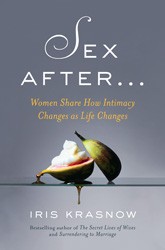Why are we familiar with the writings of Freud, Jung, and Piaget, but not those of Sabina Spielrein (1885−1942), who worked closely with each of them in the formative years of their careers? Spielrein’s Russian family was Jewish in the Enlightenment mode — no religion but a large measure of culture. Biographer John Launer also finds convincing evidence of familial sexual abuse. In 1904, Sabina was brought for treatment to a clinic in Switzerland, where she became the patient, colleague, and probably the lover of Carl Jung. These were the early years of the psychoanalytic movement, when Jung and Freud were friends, developing their signature concepts and followers. Lost in her passion for Jung, young Spielrein turned to Freud for help, but he merely covered for Jung. Spielrein pulled herself together and worked on her own theories, focusing on the relationship between death and the drive to reproduce. Soon she began her own research in psycholinguistics and child development, work which was influential on the young Piaget. Unlike Freud and Jung, Spielrein had no well-funded backers or institutions to support her work. Unable to support herself and her daughter (she had briefly married) on fees from private clients in Switzerland or Germany, she returned in 1923 to what had become the Soviet Union. Her work in pedology, a multidisciplinary approach to child development, flourished until as late as 1929, when the backlash began. By the late 1930s, Stalinist purges had murdered most of the Spielrein men, among thousands of others. Any survivors soon had to deal with the Nazis. On August 11, 1942, Sabina Spielrein and some 13,000 others were executed by the invading Nazis in the woods near her hometown of Rostov. Given Spielrein’s life story, it’s no wonder that piecing together its twists and turns has been such a daunting task for her remarkably sensitive biographer, Dr. John Launer. His background in psychological training enables him to make the complexities of Freudian, Jungian, Piagetian, and Spielreinian thinking more accessible to the lay reader. As a male researcher, Launer can detail the abuse and neglect Spielrein suffered simply for being an independent woman who dared to bring her own experiences and perspectives to the table, without sounding like he is beating the drum for anyone’s cause. By the end of Launer’s account, there’s no mistaking what the founding fathers of analysis did to this particular founding mother — and probably to many other women. At least this biography offers Spielrein some retrospective justice. Bibliography, family tree, index, notes, plates.
Related content:
- Mark Steiner: 7 Things You (Probably) Didn’t Know about Sigmund Freud
- Sigmund Freud reading list
- Jewish Mothers Never Die by Natalie David-Weill
Bettina Berch, author of the recent biography, From Hester Street to Hollywood: The Life and Work of Anzia Yezierska, teaches part-time at the Borough of Manhattan Community College.





